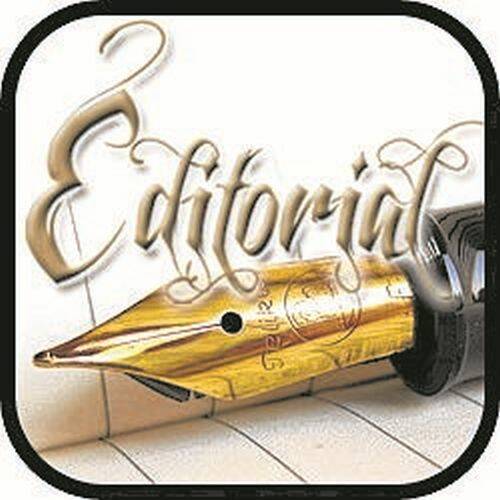Designers working on a project to improve Columbus’ downtown riverfront are considering whether undeveloped acreage along the western shore could be turned into a city park.
Hitchcock Design Group and other advisers are working with a design team regarding the west side of the East Fork White River between Second and Third streets downtown, Mayor Jim Lienhoop said.
The city-owned land, used as a municipal dump from 1938 to the late 1960s, was cleaned up with federal funding from the Superfund program.
“Do we want an active park, or a passive park?” Lienhoop said of the roughly 10-acre rectangular parcel that starts on the riverfront and continues to the State Road 46 interchange.
[sc:text-divider text-divider-title=”Story continues below gallery” ]
Some examples of active parks already in the city are Lincoln and Donner, which have playgrounds and restroom facilities, the mayor said.
A passive recreational area would be more along the lines of Noblitt Park, which is mainly greenspace, with a walking path and benches, but no restrooms or playground.
Obstacles exist for providing restrooms on that side of the river.
“It will be difficult to get water to that site,” Lienhoop said. “The water comes up Jonathan Moore Pike and stops at Wendy’s,” he said. “I don’t think we can afford to run water and sewer for a mile to that area.”
The former landfill is a wooded area, accessible only by foot and sometimes used by fisherman or recreational enthusiasts as a way to get to the sandbars between the Robert N. Stewart Bridge leading into Second Street and the Third Street bridge.
Hitchcock Design Group has proposed several concepts for that side of the river to the project’s citizen steering committee, redevelopment director Heather Pope said.
Local residents so far have preferred a curvy design vibe for the parks’ look, reflecting the waviness and curves of Mill Race Park which is just upstream.
Regarding the riverfront area as a whole, Hitchcock Design Group has suggested ideas including:
- Adding sidewalks that would extend the People Trail along the river with connections north and south of the bridges, and river access from the top of the banks.
- Modifying or removing the low-head dam
- The possibility of creating a whitewater course
- Proving a river-themed children’s play space
Pope said designers are looking at walking trails and pop-up locations where small groups could have activities in the park.
Designers are also considering input from public listening sessions that indicated some residents want access to the river from the west side, to launch kayaks or perhaps splash around in bare feet, while others prefer to just look at the water or listen to it move by in front of them.
Engineers are examining what stabilization needs to occur on both sides of the river to determine what kind of access might be feasible, she said.
In addition to that work, engineers are also modeling the river and low-head dam, which is in the center of the project, to predict what might happen if the low-head dam is removed or modified. Measurements are being taken of water levels not just in the river, but also in the Mill Race Park pond and above and below the dam, which is near the Upland Columbus Pump House restaurant and brew pub.
A new park would be located where the city’s riverfront project intersects with the city’s planned railroad overpass.
For the overpass project, the city is preparing to eliminate the stoplight and intersection at State Road 11 and State Road 46, instead creating a railroad overpass and a pretzel traffic pattern to move traffic to the south of the current intersection.
This is to provide an unimpeded flow of traffic in and out of Columbus in response to faster and heavier trains that will be traveling through the city as part of a Louisville & Indiana Railroad and CSX Railroad partnership, shipping freight north from Louisville.
Since the path of State Road 46 will be re-routed further south for the overpass that will lead into the Stewart bridge, the straight section of roadway leading into the State Road 11 and State Road 46 will no longer be utilized, Lienhoop said.
That creates a question of access along the river for pedestrians and bicylists between the Second and Third streets bridges, Lienhoop said.
Both bridges and streets are busy thoroughfares taking west-side commuters to and from downtown and out to the Interstate 65 interchange. Designers are looking into how to design a path off the bridges to the west side of the river, the mayor said.
Even with a passive park, some sort of vehicle access or parking will be needed, he said.
In addition to designing access, Pope said the city redevelopment department is prepared to revisit the city’s Front Door Project for the west side to make sure the redesigned Jonathan Moore Pike and overpass meet expectations for a welcoming area of the city.
“We want to make sure the entrance to this city area is beautiful,” she said.
Hitchcock is being kept in the design loop on the railroad project so the riverfront and railroad-overpass projects are designed seamlessly at the western entrance to downtown, Pope said.
[sc:pullout-title pullout-title=”What’s next” ][sc:pullout-text-begin]
The city is planning to complete a final riverfront concept report within the next two months. A public presentation is scheduled the evening of Nov. 8 at the Hamilton Community Center & Ice Arena, 2501 Lincoln Park Drive, at a time to be announced.
[sc:pullout-text-end][sc:pullout-title pullout-title=”Where to learn more” ][sc:pullout-text-begin]
To learn more about the City of Columbus Riverfront project, visit columbus.in.gov/.
[sc:pullout-text-end][sc:pullout-title pullout-title=”Landfill history” ][sc:pullout-text-begin]
The city of Columbus is considering developing a park on the western shore of the East Fork White River, between the Second and Third Street bridges. That’s where the city dump was located between 1938 and the mid- to late 1960s. In 1990, after a two-year investigation, federal environmental officials declared that the old landfill, located on 12 acres of mostly wooded land, was no immediate threat to health or the environment. The landfill had been placed on the Superfund list of the nation’s worst hazardous waste sites in 1985 based on results of a preliminary study revealing the presence of lead and chromium.
[sc:pullout-text-end]





